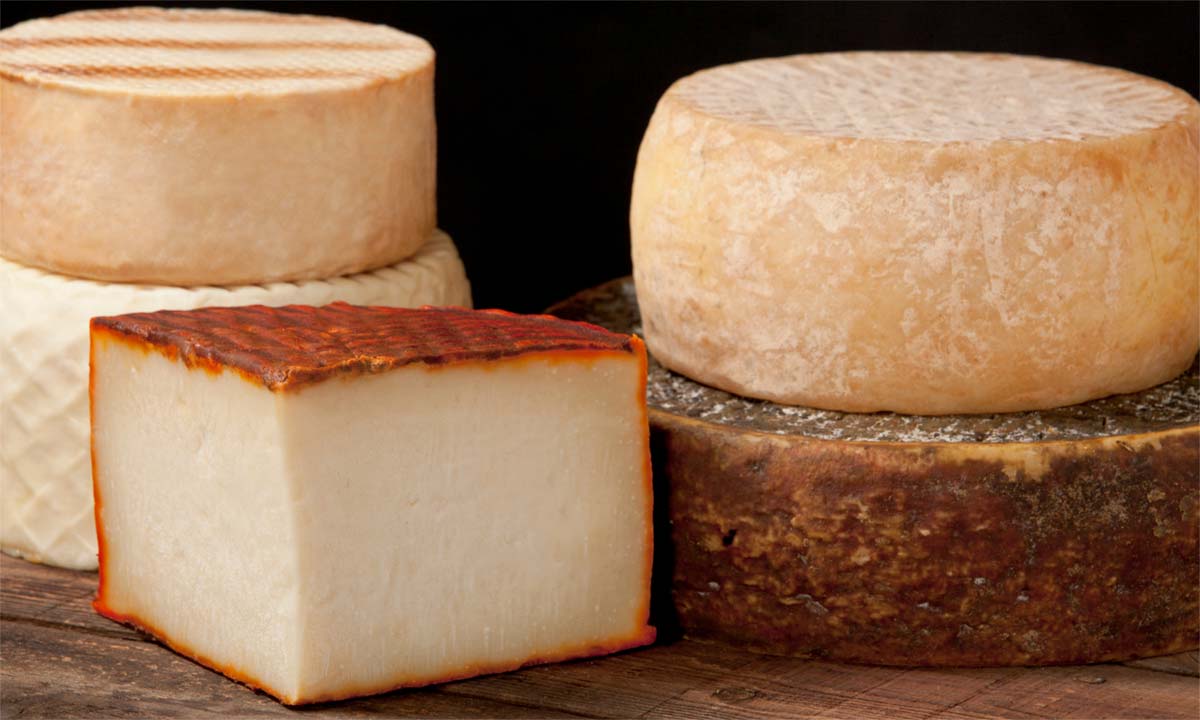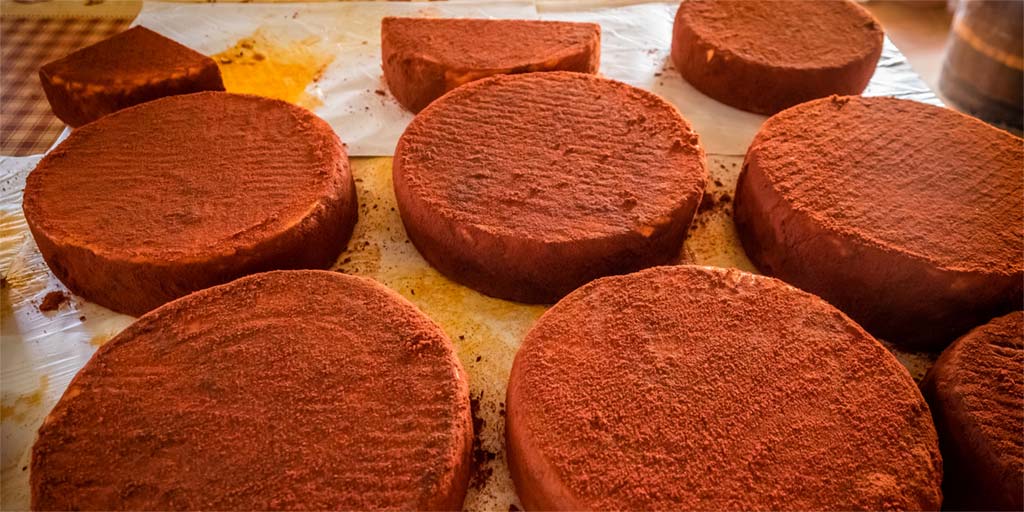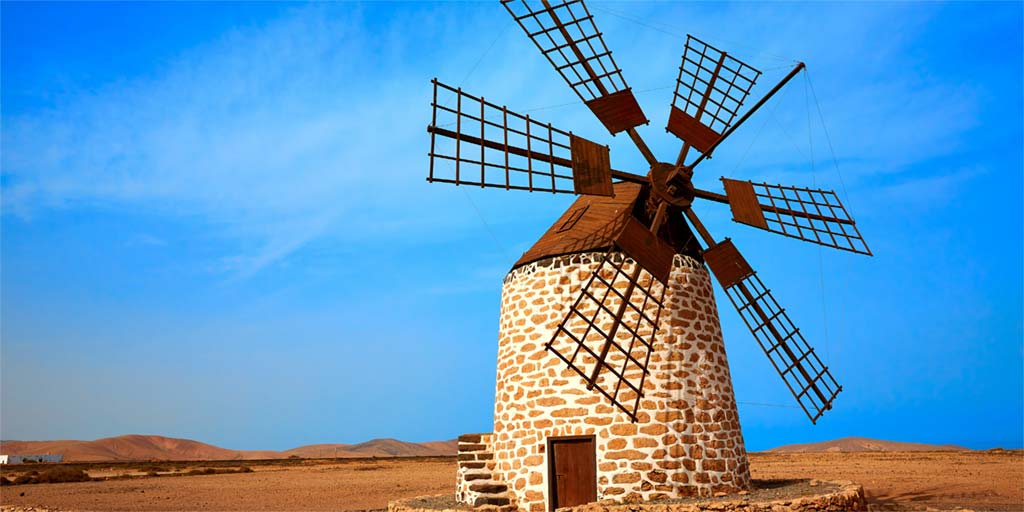6 things you need to know about Majorero cheese

Besides the spectacular beaches and immense beauty of Fuerteventura, you will also be able to enjoy its diverse and rich cuisine.
With its abundance of local produce, Canarian gastronomy is unique in the world, with traditional recipes that have been passed down the generations throughout history.
One product that’s stood the test of time – and improved over the years – is Majorero cheese, a nationally and internationally renowned local cheese, named by many the “jewel of Fuerteventura”. Made from the milk of the majorera, a native goat of the island, it was the first Canary Island cheese to obtain the protected designation of origin label, thanks to its particular and exceptional qualities.
The origin of Majorero cheese
To find out where this cheese comes from, we need to travel back thousands of years to when indigenous people lived in Maxorata, the name of the island of Fuerteventura back then. This is where the word ‘majorero’ comes from, used to describe the inhabitants of the island and the name subsequently given to our most famous cheese. Or perhaps the word originates from the name of the sandals worn by local shepherds in ancient times, called ‘majoreras’.
Back then, the Canary Islands already had a rich tradition of goat farming, but this was especially the case on the infinite island of Fuerteventura. The huge number of goats on the island blessed the native people of the island with an incredible raw material, goat milk, used to make this tasty cheese.
A Designation of Origin product
All Designation of Origin products have one thing in common – their excellent quality. These are foods with a national origin that have undergone extensive quality and safety monitoring. This process guarantees that the product customers are tasting is unique, has been meticulously prepared, and meets all the standards you’d expect from excellence. Majorero cheese has a long-established tradition, gaining Designation of Origin status in 1996 and making it the first goat’s cheese in Spain to get the Protected Designation of Origin label. Over the years since it has grown in prestige, the cheese is now unique to Spain and known worldwide.
A delicate process

For artisanally produced fare of the highest quality, a delicate preparation process is a must, with maximum attention paid to every step, bound to the tradition that’s made it so well-known throughout the world.
The first step for this Canary Island delicacy is to yield the curd from the Majorera goat milk. To do so, the milk is left to coagulate for around an hour at between 28 and 32 degrees C. Next the curd needs to be cut, and the way it’s done depends on which type of Majorero cheese is being made. After that comes the first pressing, to remove as much whey as possible. Once there’s a solid mass, it’s placed in a palm or plastic mould with the characteristic woven palm leaf motif so typical of the cheese, in various sizes.
Salting is the next step, and sea salt is scattered over each Majorero cheese. This layer is removed after 24 hours, and next comes a process that requires more time – and patience: ripening. This final step encompasses turning the cheese, cleaning it and coating it with paprika, ‘gofio’ flour or oil, giving this delicious product its distinctive flavour.
Majorero cheese comes in a cylindrical form, with a weight of between 1 and 6 kilograms, a diameter of 15 to 35 centimetres and height of 6 to 9 centimetres. And it’s not only the shape that’s so specific. Its slightly spicy, acidic flavour, intense aroma and creamy texture are equally distinctive. Another detail that makes Majorero cheese so unique is the texture, with small dimples you can see in each cut.
Majorero goats – masters of productivity
The cheese itself might be famous, but the true heroes behind this delicacy are the Majorera goats, inhabitants of the island for hundreds of years and known as some of the most productive in the world. This is a species that’s adapted perfectly to the hostile land, protected from many of the diseases common to the animals and in excellent health, with exceptional genetic qualities. Their milk is testament to their fine condition: high quality, free from impurities, preservatives or chemicals and with a high protein and fat content.
Award-winning, world-famous cheese
When a product is this good, the world’s finest palates soon recognise it. Majorero cheese is such a fine quality cheese it’s attended the best cheese competitions in the world. And it’s a winner, taking the gold medal for best cured goat’s cheese with paprika in the world at the 2020 World Cheese Awards. The semi-cured paprika cheese got another accolade, winning a silver medal.
The museum of Majorero cheese

Majorero cheese is such an important part of Canarian gastronomy it even has its own museum.
It’s a must stop for cheese lovers. Everyone who visits this pretty and unique enclave of Fuerteventura can get an experience tailored to their tastes. Take a tour, where you’ll find out all about the island’s volcanic origins, its rich and distinct biodiversity and all the other factors that have had an influence on the unique flavour of Majorero cheese. And it’s not all about cheese: the museum has much more, such as a cactus and palm tree garden, restaurant (because your visit wouldn’t be complete without tasting the island’s best Majorero cheese) and two mills – a water mill and windmill – typical of the island, which have been used for years in Fuerteventuran agriculture.
Categories: Canaries, Fuerteventura, Be inspired



Me canta el queso tofio pimentón semi curado